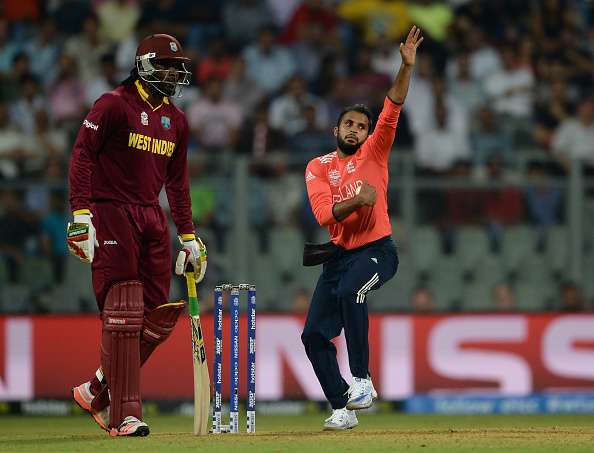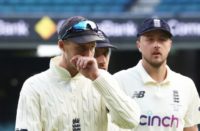It might be as well to preface the following remarks with an admission that I fear what I am about to propose has as much chance of happening as me receiving a phone call from James Whitaker asking what I am doing on May 19. Yet, to quote Speaker of the House John Bercow MP, talking on another matter this week, it seems to me: “A point so blindingly obvious that only an extraordinarily clever and sophisticated person could fail to grasp it.”
Whitaker and his co-selectors have some tough decisions to make as they prepare to pick their squad for the first Test of the summer, against Sri Lanka in Leeds, starting in less than a fortnight. England’s victory in South Africa was a sterling effort, as was their Ashes win last summer. But even before the terrible news came through that James Taylor’s career was over, they knew they had questions to solve regarding their batting line-up, for, as well as finding a replacement for him at number five, they must not only settle on the choice of Alastair Cook’s opening partner, but also whether Nick Compton should continue at No.3.
Plenty of contenders have been put forward, Derek Pringle casts his expert eye over them elsewhere in The Cricket Paper today and many will agree that Jos Buttler should be brought back to keep wicket and bat at number seven with Jonny Bairstow promoted to fill the gap left by Taylor’s absence at five. My preference would be to stick with Alex Hales, reluctantly to discard Compton and give James Vince the chance to bring his smooth technique into the Test arena.
But, with the greatest respect, it seems to me that most pundits I have read have too easily settled for the prevailing wisdom that the side needs to be jam-packed with batting and that, as a consequence, the full potential benefit of the emergence of Ben Stokes as a match-winning all-rounder is in danger of not being realised. After all, the gift of Stokes’ potentially world-class batting at six and his bowling as one of a four-man pace attack, not to mention his out-of-this-world-class catching, is, surely, the chance not to play an extra batsman, or, in the case of Bairstow and Buttler’s, an extra wicketkeeper-batsman, but an extra bowler, a leg-spinner to boot – and now is a perfect opportunity to take it.
So, instead of a team containing seven batters, eight, if you also count Moeen Ali, and a five-man attack of four quicks, plus his off-spin, I would advocate the following XI: 1. Cook (Capt.) 2. Hales 3. Vince 4. Root 5. Bairstow (wkt) 6. Stokes 7. Mooen Ali 8. Adil Rashid 9. Broad 10. Anderson 11. Finn.
And here’s why…
Granted, England have never fancied going into home Tests with two spinners, particularly at the start of the season when pitches and overhead conditions render such thinking counter-intuitive.
And it has to be admitted that the dual-spin option England tried against Pakistan in the UAE last autumn was hardly an unqualified success. But there is a huge difference between pressing Moeen Ali to open the batting in order to squeeze Rashid into the side, a position with which the Worcestershire batsman had never before been acquainted, and allowing him to operate in far more familiar surroundings in the middle-order. Furthermore, it should be remembered that, after Rashid had taken five for 64 in Pakistan’s crazy second innings in the opening Test in Abu Dhabi, England were only a couple of overs of better light away from what would have been a stunning victory and that, thereafter, his lack of international experience showed.
England will certainly want to play two twirlymen on the winter tours to India and Bangladesh, so picking the Yorkshire leggie now to operate in tandem with Moeen, especially at his home ground of Headingley, then sticking with them for the whole of the summer, would not only give Rashid the chance to add seven more caps-worth of nous to the three he won in the desert, but allow the pair of them the invaluable opportunity to learn more about how best to work together and to complement each other as a twin-threat.
As for Rashid’s own progress over the winter, his record demonstrates how quickly he, and they, can learn when given that kind of a chance. After his spell in England’s Test and one-day sides in the UAE, instead of ‘carrying drinks’ for the Test side in South Africa, he was sent down under by the hierarchy and earned a cult following for Adelaide Strikers in the Big Bash League, securing his place in England World T20 plans and their final XI.
Returning to England’s coloured kit against the Proteas, Rashid continued the good work he and Moeen had produced in 50-over cricket since coming together for the post-Ashes series against Australia.
In three series, against the Aussies, Pakistan and South Africa, the pair took 33 wickets between them (Moeen 17, Rashid 16) at a combined economy rate of 5.34.
All of which drew the following assessment of Rashid from coach Trevor Bayliss: “He’s still young. He could have a ten-year international career and this is just the beginning. I suppose it’s about trying to fast-track him a little. He’s certainly bowled well for us in the white-ball games, but he’s got the opportunity to bowl well in Test cricket as well.”
Those who favour erring on the side of more batting may well point to the invaluable contributions made by Moeen at eight against Australia last summer and, on the face if it, that is a fair point.
But could he not equally well have made those runs at seven, and, with more opportunity to spend more time at the crease with the top-order players above him rather than with the tail behind him, who knows what he could produce from there?
As for the simple question of picking Buttler and Bairstow in the same side: why?
Unless I’ve missed something, only one of them can keep wicket at any given time and, on the evidence so far, while Bairstow is no-one’s Jack Russell, neither is Buttler, nor has he shown any signs that he can succeed as a Test batsman. Far better then, for now, to let him flourish in the forms of the game in which he has shown himself such a force of nature.
Just in case anyone’s forgotten, by the way, Rashid is no mug with the bat anyway.
Convinced? Probably not, and the selectors almost certainly won’t be.
But, just for a moment, close your eyes and think of an England team of the future containing seven genuine Test class batsmen, four genuine Test class pace bowlers and two genuine Test class spinners.
Why not try and start that future now?
This piece originally featured in The Cricket Paper, Friday May 6 2016












